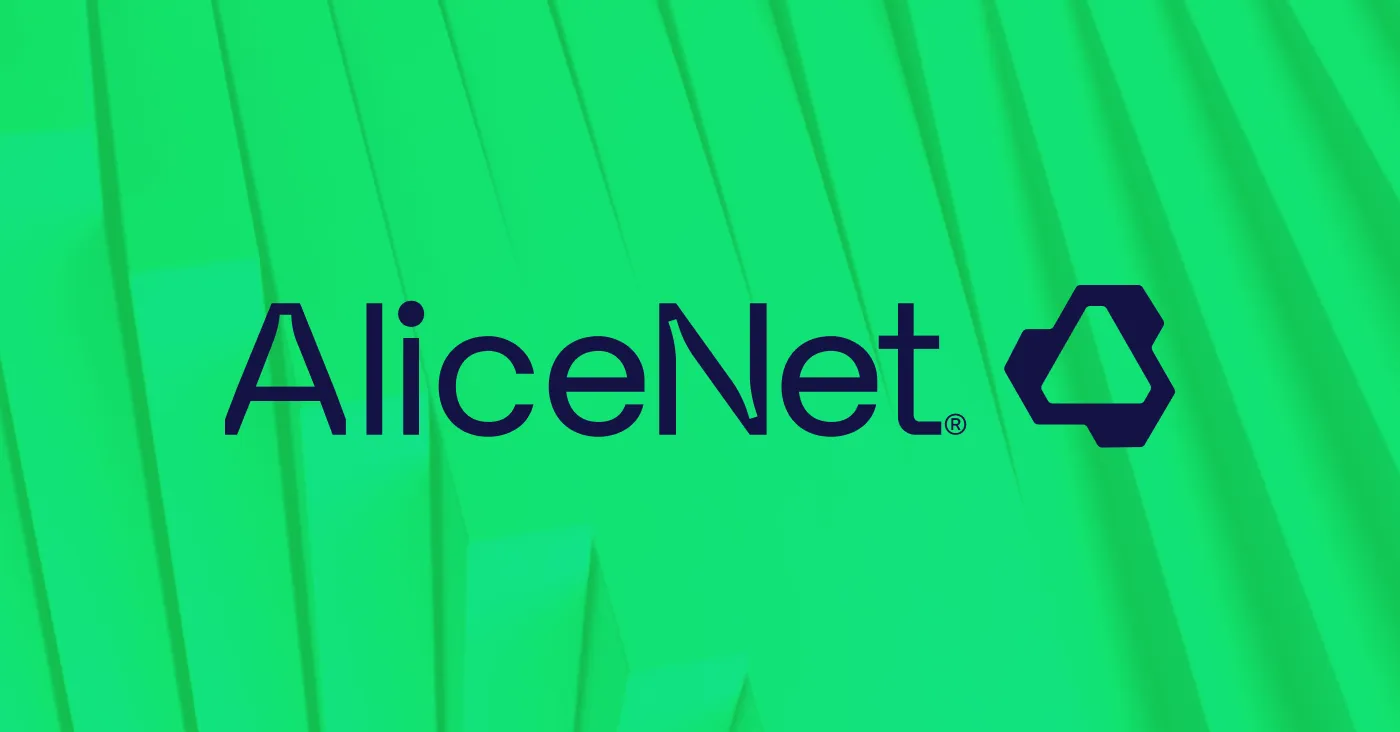AliceNet, what is it? Discover the objectives and characteristics of the project as well as direct access to its website.
AliceNet is a Layer 2 blockchain designed to enable trusted transactions and verifiable proofs of data across Web3.
AliceNet, architecture
Discover AliceNet, it’s a hybrid of Bitcoin’s Unspent Transaction Output (UTXO) and Ethereum’s account-based architecture, which allows for improved transaction processing efficiency, flexibility and scalability. This UTXO-based transaction model enables users to get all of the benefits of complex logic handling that comes with predefined smart contracts, but without requiring smart contract code – or even deploying a smart contract at all.
For example, UTXO transactions have inputs and outputs. The inputs reference UTXOs that haven’t been spent, and the outputs define the new UTXOs that are created when the transaction is successfully transmitted to the network. Once the inputted UTXOs have been spent, any attempts of a replay attack fail immediately because the original UTXO no longer exists. Better yet, users can also perform multiple operations in a single transaction securely, with only the overhead of a normal transaction, while also reducing the possibility of error and unnecessary loss of funds.
Uniquely, UTXOs in AliceNet can represent different types of assets and let users transact directly with one another without the help of any centralized firms, escrow providers, or other third parties. Furthermore, AliceNet’s escrow mechanism can be directly represented by the transaction itself, which again forgoes the need for a smart contract and reduces the complexity and cost of listing assets.
The finality guarantee of the originating chain determines the availability of assets deposited onto AliceNet. We wait for finality guarantees to ensure that the user deposited the asset, and that the history can’t be changed in the originating chain. Once in possession of this object on AliceNet, the user can send it around the market or withdraw it to other sidechains.
Tokens
This ecosystem operates on a two-token model: ALCA and ALCB. ALCA acts as the governance and staking token. ALCB is the utility token designed to pay transaction fees inside of AliceNet. Both tokens follow the ERC-20 standard that exists on the Ethereum blockchain.
ALCA allows you to: Stake your tokens in the public staking system and accrue ETH profits resulting from transactions on the platform. If you stake your ALCA tokens long enough, you will earn additional rewards in the form of ALCA and ETH. If you accrue a large amount of tokens, you may even be eligible to become a validator.
Also, those who stake ALCA participate in AliceNet’s governance system. We believe that community governance is a powerful tool that can help direct us on the best path forward for the future utility of the technology we’re building, and we want those who invest with us to have a voice.
ALCB allows you to: Send transactions through this project. ALCB are minted when an interested buyer sends ETH to ALCB’s ERC-20 smart contract on the Ethereum mainnet. When new ALCB tokens are minted, 75% of the associated ETH value set aside per each ALCB contract is distributed to ALCA validators and public stakers.
To spend ALCB, it must first be deposited into AliceNet. When a transaction is executed, the cost in ALCB is burned from the total available supply, and the remaining 25% of the associated ETH value set aside per each ALCB contract is distributed to ALCA validators and public stakers.
Conclusion
In the beginning, L2s were created in no small part as a solution to blockchain scalability. But as the Web3 ecosystem expands, L2 interconnectivity is more important than ever. There are already enough competing L2s in Web3. What we need is an L2 that can give users easy access to a host of features and platforms that can’t be found on any one chain, that helps create an optimal Web3 by way of bringing the competition together.
We designed AliceNet to be the L2 chain that does exactly just that. Our combination of compact state proofs, state rent, and UTXO-based datastores act as the ideal base for a Web3 PKI. You can also create keys and enforce them with compact state proofs while paying only for the duration they are required to exist. Using our native multisig support and state channels, you can be certain that your activities will be as inexpensive as possible, and everyone involved will be secure in the process.
Our transaction model leverages the security of the Ethereum mainnet and ZK rollups to achieve a secure hub and spoke model that is not centered upon the Ethereum mainnet itself. Partial transactions cost users nothing to propose an action, and fees are only paid if a transaction occurs. Our technology allows for true no-risk, no-loss offers—not possible in conventional Ethereum account-based chains.
